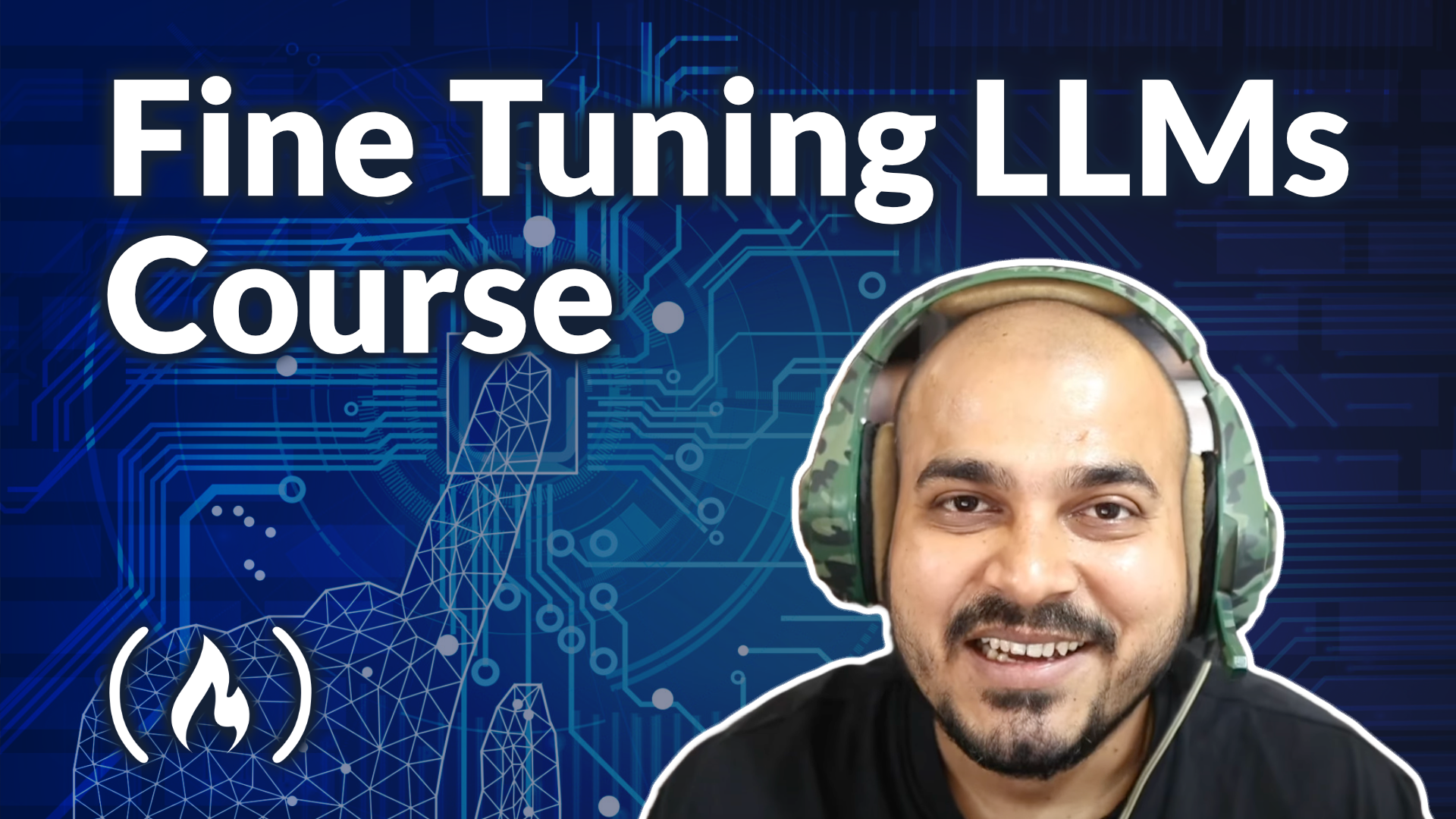Fine-tuning is a process in machine learning that allows you to adapt pre-trained models to specific tasks or datasets, enhancing their performance and usability. We just posted a comprehensive course on the freeCodeCamp.org YouTube channel that will teach you everything you need to know about fine-tuning large language models (LLMs). Krish Naik developed this course. Krish is an experienced developer and intructor.
In this course, you'll learn about fine-tuning using QLORA and LORA, as well as quantization techniques with LLama2, Gradient, and the Google Gemma model. Let's break down what these terms mean and what you'll learn in each section:
QLORA (Quantized Low-Rank Adaptation): QLORA is a technique that combines quantization and low-rank adaptation. Quantization reduces the precision of the model's weights, which can significantly reduce the model's size and speed up computations. Low-rank adaptation involves adjusting only a small number of parameters in the model, making fine-tuning more efficient and less resource-intensive.
LORA (Low-Rank Adaptation): Similar to QLORA but without quantization, LORA focuses on adapting a small subset of the model's parameters. This makes it a lightweight and effective approach for fine-tuning large models on specific tasks.
Quantization with LLama2: Quantization is a technique used to compress models by reducing the number of bits needed to represent each parameter. LLama2 is a framework that helps implement quantization, making it easier to deploy models on devices with limited computational resources while maintaining performance.
Gradient: This refers to the gradient-based optimization methods used during fine-tuning. Understanding gradients is crucial for training machine learning models, as gradients indicate the direction in which the model's parameters should be adjusted to minimize the error.
Google Gemma Model: The Google Gemma model is an advanced framework that integrates various techniques for model optimization and fine-tuning. You'll learn how to leverage its features to enhance the performance of your fine-tuned models.
Here are the sections in this course:
Introduction: Start with an overview of the course and its objectives. Understand the importance of fine-tuning in the context of large language models and get a glimpse of what you'll achieve by the end of the course.
Quantization Intuition: Dive into the concept of quantization. Learn how quantization helps in optimizing models by reducing their size and computational requirements without significantly compromising performance.
LORA and QLORA In-Depth Intuition: Explore the in-depth mechanics of LORA (Low-Rank Adaptation) and QLORA (Quantized Low-Rank Adaptation). Understand how these techniques enhance the efficiency of fine-tuning by adapting a small number of parameters.
Fine-Tuning with LLama2: Learn how to fine-tune models using LLama2. This section includes practical steps and guidance on implementing fine-tuning with this powerful tool.
1-bit LLM In-Depth Intuition: Gain insights into 1-bit LLMs (Large Language Models). Understand how this approach simplifies model computations and aids in efficient fine-tuning.
Fine-Tuning with Google Gemma Models: Discover how to fine-tune models using Google Gemma. This section provides a comprehensive guide to leveraging Google Gemma's capabilities for fine-tuning large language models.
Building LLM Pipelines with No Code: Learn how to construct LLM pipelines without writing code. This section is ideal for those who prefer a no-code approach to building and managing fine-tuning pipelines.
Fine-Tuning with Your Own Custom Data: Understand how to fine-tune models using your own custom data. This practical section will guide you through the steps of preparing and utilizing your data for effective fine-tuning.
This course is perfect for anyone interested in deepening their understanding of machine learning and artificial intelligence. Watch the full course on the freeCodeCamp.org YouTube channel (3-hour watch).

